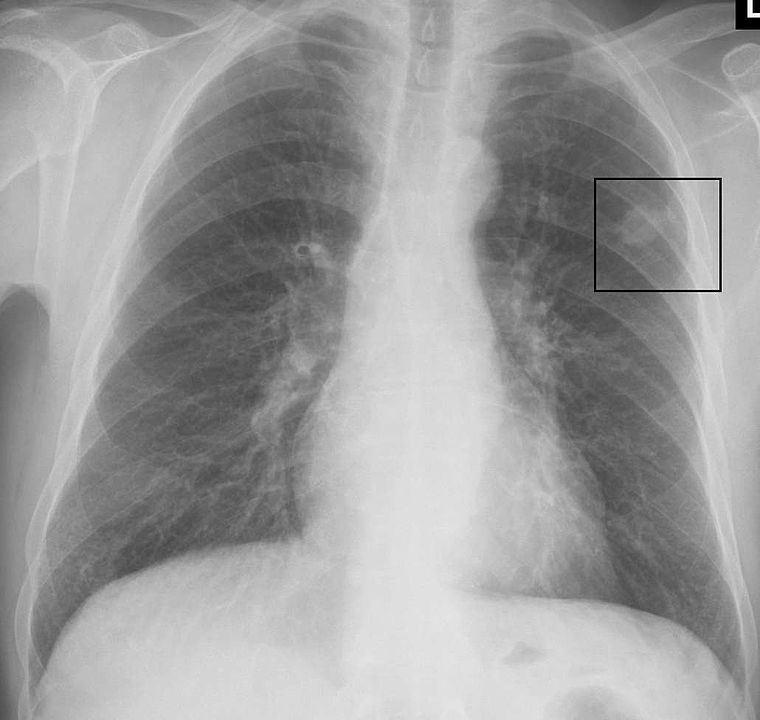
I learned this today. Cancer kills people because it grows into key organs, nerves or blood vessels and impairs their function.
Cancer is caused when cells start to change abnormally. New cells in our bodies form through growth and division. When cells become old and need to be replaced, they are switched off and die. New cells grow to replace them. Once new cells have grown to replace the old cells, they stop growing.
When cells grow, there are two genes at work within them. Proto-oncogenes, which promote cell growth and reproduction, and tumor suppressor genes, which inhibit cell division and survival. In a healthy cell, the proto-oncogenes help the cell grow until they are deactivated and stop. The tumor suppressor genes slow down the cell’s rate of cell division, repair the DNA, and tell the cell when it is time to die.
A cancer cell is formed when there is a mutation in either of these genes. A mutated proto-oncogene can become activated and turn into an oncogene, which will grow rapidly. Likewise, a mutated tumor suppressor gene can become deactivated and not do its job. It will allow the cell to grow out of control.
Not all mutated genes cause cancer. Most of them are killed off by the immune system before they can do any damage. However, every now and again, a cell will start to divide and grow faster than the immune system can deal with. That is when cancer starts.
As the cancer starts to grow, it has two tricks to help it. The first one is it has a way to trick the immune system into not killing it. The cancer cells undergo a genetic change that makes them invisible to white blood cells. When cells are infected by a bacteria or a virus, they develop a group of molecules on their surface. The white blood cell, the killer T-cell, has receptors for these molecules. When it detects them, it destroys the infected cell. Cancer cells develop these molecules on their surface. However, they also develop a protein called PDL1 (programmed death-ligand 1) that binds to receptors on the killer T-cell and inhibits it. The T-cell swims on past without eliminating the cancer cell.
The cancer cells continue growing at a high rate. And their second trick helps with that growth. The cancer cells are able to influence the healthy cells around them into producing blood vessels that supply oxygen and nutrients to the growing tumor. These new blood vessels will also remove waste products from the tumor, helping it grow.
So, how do the cancer cells kill? As the tumor gets bigger, parts of it can break off and sail around the body in the blood or lymph system. They may attach themselves to different places and start growing more tumors. And this is what kills people. The tumors start to interfere with the functioning of vital organs.
Cancers in different places cause death in different ways, but it is always because they affect the body’s regular function. Gastrointestinal cancers cause death through malnutrition because the digestive system is blocked, or infection when the intestine is ruptured. Lung cancers cause death because of the lung’s decreased ability to take in oxygen, or through infection. Bone cancers increase calcium levels in the blood and reduce the body’s ability to run its immune system to fight other illnesses. Liver cancers cause death because the liver can’t remove enough chemicals and toxins, which build up.
However, cancer doesn’t always kill. Statistics say that 1 out of 2 people will get cancer at some point in their life and survival rates are increasing year by year. It also depends at what stage the cancer is caught and where that cancer is. Chances of cancer increase with age and smoking, obesity, unhealthy diets, and a sedentary lifestyle all increase the risk.
One of the most common treatments for cancer is chemotherapy. Chemotherapy uses drugs to kill cells that are dividing. Because cancer cells grow very fast, the chemotherapy drugs are most likely to kill the cancer cells. They kill other cells that are dividing as well. Hair, skin, bone marrow, stomach lining, and others, but these grow back. One problem with this is that the cancer cells can develop an immunity to the chemotherapy drugs.
Another possible treatment that is being researched now is a way to interfere with the PDL1 protein that the cancer cells produce. If this can be removed, the immune system will attack the cancer cells on its own.
Targeted viruses are also being considered. It is possible to genetically modify a virus so that it will only attack cancer cells. The resultant viral infection causes the cancer cells to start to break down and the immune system kills the rest of the cancer cells and the virus. This is still in development.
Every year, technology gets slightly closer to finding a way to cure different cancers. And this is what I learned today.
Image By Lange123, CC BY-SA 3.0, https://commons.wikimedia.org/w/index.php?curid=2110741
Sources
https://www.medicalnewstoday.com/articles/how-does-cancer-kill-you
https://en.wikipedia.org/wiki/Cancer
https://www.cancerresearchuk.org/about-cancer/coping/dying-with-cancer/how-can-cancer-kill-you
https://www.healthline.com/health/how-does-cancer-kill-you#complications
https://www.cancerresearchuk.org/about-cancer/what-is-cancer
https://moffitt.org/endeavor/archive/using-a-virus-to-treat-cancer
https://www.cancer.gov/about-cancer/understanding/statistics
https://www.cancer.gov/about-cancer/understanding/statistics
